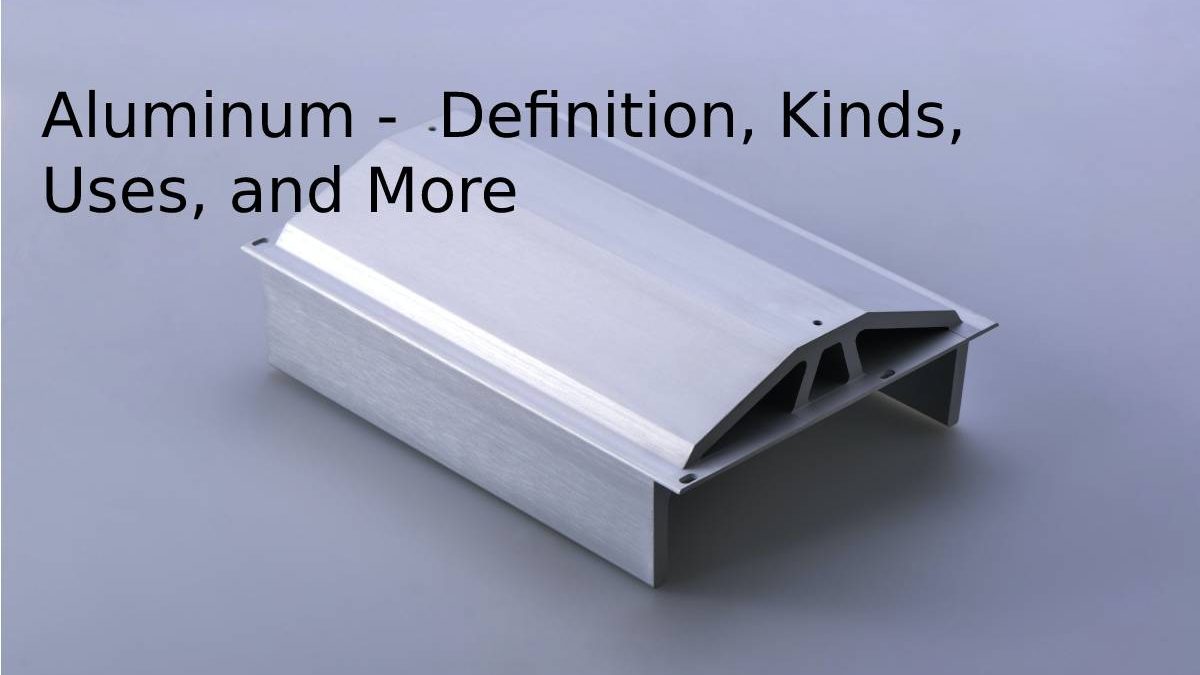Table of Contents
Aluminum Definition
Aluminum: The concept is use to name the substance that has 13 as its atomic number. This chemical element is a metal present, in large quantities on our planet. Its components are found in animals, plants, and stones. Whose symbol is Al, is using in numerous industry sectors.
Aluminum – Kinds
Aluminum is a white, shiny metal with high light and heat reflectivity. This is the ability of the metal to conduct heat. The thermal conductivity of Aluminum ranges from 80 to 230 W/mK, surpassed only by copper. Aluminum stands out for being a light material. Pure Aluminum is the weakest material and the most accurate type of Aluminum.
1000 Series: Aluminum is 99% pure.
2000 series: Aluminum has a copper alloy.
3000 series: it is alloyed with magnesium.
4000 series: the alloy is made with silicon.
Steel is undoubtedly much more robust than Aluminum, making it more durable, heavier, and less deformable; it supports greater weights, tensions, and temperatures than this without suffering any damage. Meanwhile, Aluminum is up to a third lighter than steel. Conventional Aluminum, this type of installation, is cheaper without losing the guarantees and aesthetics that Aluminum offers; it can be install with the colours and finishes that we have mentioning and prevent the entry of outside air because they are perfectly seal.
Aluminum is a very light silvery metal. Its atomic mass is 26.9815; it has a melting point of 660ºC and a boiling point of 2,467ºC, and a relative density of 2.7 kg/m 3. It is a very electropositive and highly reactive metal. Exposure to Aluminum is generally not harmful, but exposure to high amounts can affect health. Workers who inhale high amounts of powder Aluminum may develop respiratory problems such as coughing or abnormalities seen on chest x-rays.
Uses
This is a material that has become indispensable in everyday life for packaging food and pharmacological products.
- Food packaging.
- Pharmaceutical applications.
- Inner lining for tobacco and tobacco containers
- Industrial.
According to the following table, aluminum alloys are classify in series, from 1000 to 8000. In addition, 2000, 6000, and 7000 series are heat-treated to improve their properties.
It is the most abundant metallic element in our world. The constitutes 8% of the earth’s crust. It occurs in various chemical forms in most rocks and soils in vegetation and is found naturally in running water and in dust particles in the air.
Because of this, today, it is possible to find more than 400 alloys of both Aluminum and wrought Aluminum and around 200 aluminum alloys in the form of ingots or castings.
Manufacturer Details

Its toughness, malleability, and ductility make it a highly appreciate material for manufacturing various products. Its appearance, which resembles silver, also allows the creation of decorative elements or coatings. Among the most valuable properties of its ability to conduct electrical current and its strength to resist wear. On the other hand, l material is comparing to other metals.
Aluminium has many properties that make it irresistible to more than one industry; In addition to its ability mentioning above to retain its qualities once recycling , also stands out for its large percentage of energy it contains 15 kWh for every kilogram, the value of waste: this represents a significant incentive for the economy, the lightness at the same volume, it weighs about a third of that of steel and copper its resistance to corrosion which makes it an ideal material for the construction of products that are expose to excessive or indelicate use; its durability, relates to the previous point.
Its ability to conduct heat and electricity: a complementary facet to its resistance, which considerably widens its field of the application to be non-toxic and non-magnetic: which avoids specific problems and restrictions of use in the products; effectively reflects light: this makes it ideal for interior lighting systems be odorless and waterproof
It does not require many precautions to maintain it.
All this explains why Aluminum is so widely using in various sectors, such as electricity and communication (where it has slowly replace copper since the 1950s for the manufacture of high-voltage transmission lines), transportation (its presence in the automobile industry is growing), building and construction (for door and window structures, as well as for covering surfaces as large as a stadium).
A metallic chemical element, symbol Al, atomic number 13, atomic weight 26.9815, belongs to group IIIA of the periodic system. Pure Aluminum is soft and has little mechanical strength, but it can be alloying with other elements to increase its strength and acquire various valuable properties.
It is one of the most widespread elements in the earth’s crust it constitutes 7% of its elemental composition. This is the third most abundant element after oxygen and silicon. this is got from bauxite, or sedimentary rock, mainly in oxide.
Conclusion
This material is among those that provide the most benefits to those who recycle it since its characteristics make it wildly profitable. It will continue to be use long before humanity can or wants to replace it. Of course, economic interests are only one side of the coin .It gets along so well with recycling and makes people who care about the environment happy since its use reduces the abuse of natural resources.

